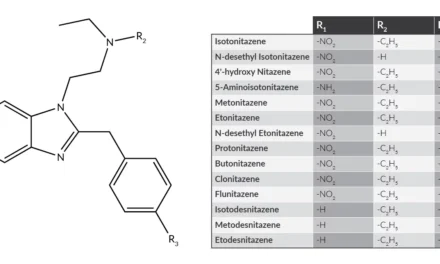Washington Post-Kaiser Family Foundation long-term opioid users poll shows very different perspectives
One thing that emerged clearly from the recent survey of prescription painkiller users and those who live with them: The two groups have wildly different perceptions of the impact of opioids on their lives. The Washington Post article on the survey results confirms that what you see depends on where you stand.
A full third of those who’ve been on opioids for 60 days or longer frankly admit they’re addicted or physically dependent. Not a surprise, since withdrawal symptoms can occur within a couple weeks of first use. But most consider that a price they’re willing to pay. “Granted, there are negative aspects,” one individual explained to me, “but I simply cannot imagine life without opioids.”
The survey found that those who live with opioid users have a far more negative view of their effects. About half of those surveyed reported clear adverse impact on major areas of function, including “…physical and mental health, finances and personal relationships.”
It’s a familiar phenomenon to those who work in treatment, and a principal reason that family members are often the ones to seek help– while users themselves may actively resist it. Some of the objections we hear from the addicted:
- “My doctor prescribed them.”
- “It’s medicine, not drugs.”
- “I only take as much as I need.”
- “If the pain goes away, then I’ll taper off.”
- “But without the pills, what do I do for pain?”
And some of the complaints we hear from the family:
- “She acts like she’s on something.”
- “His personality, his behavior, his moods — they’ve changed.”
- “I think she takes more than she admits. And conceals it.”
- “He’s so defensive. He blows his top whenever the subject comes up.”
- “I found loose pills hidden in a drawer. He denies they’re his. But where else could they have come from?”
The problem is, once you’ve become physically dependent on painkillers– whether or not you recognize your dependence — the resulting withdrawal syndrome affects your experience of pain. As blood levels drop, the brain signals for more painkillers, through symptoms such as anxiety, irritability, or physical discomfort. The pain that accompanies withdrawal resembles the pain of other illnesses, including the ones for which the drugs were prescribed. There’s no subjective way to tell the difference. Withdrawal is interpreted as evidence of more pain, which not surprisingly is treated with more medication.
Also, like chronic pain, addiction can trigger depression. That often results in another visit to the physician, who adds another prescription, this time for antidepressants. Are those effective when someone is already taking significant doses of opioid painkillers? Perhaps not.
This isn’t a problem a physician can deal with comfortably in the context of a 12-15 minute office visit. Even with training, practitioners face real resistance from the patient. Easier to simply continue the prescription. But that further escalates problems at home.
For families, there’s no perfect solution. Open conflict is never helpful. Instead, we may recommend concerned family members contact the prescribing professional (or the office nurse, who may be more receptive) to share factual information about your concerns. You can ask that it be kept confidential, if you’re afraid of an angry response from your loved one.
If you believe you’re dealing with active addiction, you can consult an intervention professional for valuable guidance– without which you may not have much success. The defenses that protect addiction are formidable, but there are proven ways to work around them.
Here’s a link to our brief informational piece on the subject, “Practical Advice on Prescription Painkillers.”













